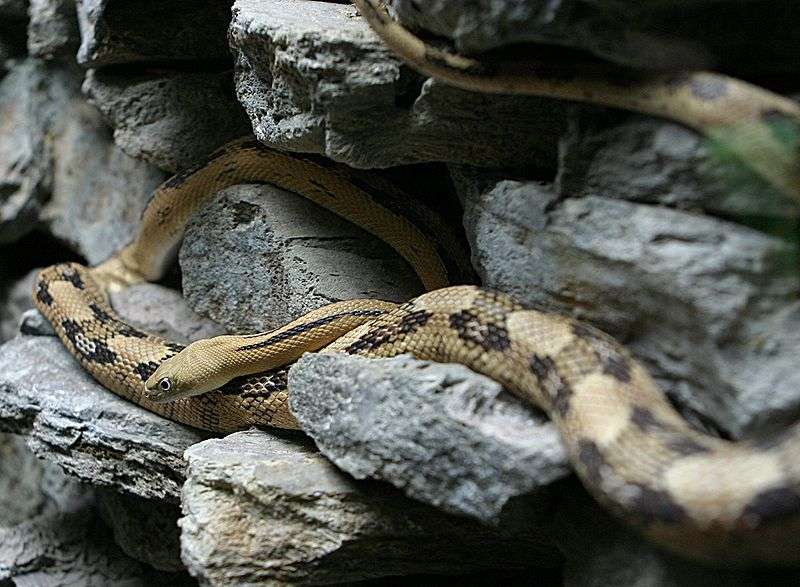
Description:
Scientific name: Bogertophis subocularis
Life span: 10-15 years
The Davis Mountain rat snake (Bogertophis subocularis), sometimes known as the Trans-Pecos rat snake, is a medium- to large-sized nonvenomous rat snake species belonging to the Colubridae family. Dorsally, the coloration ranges from yellow to tan with a number of H-shaped black or dark brown patterns. The eye is large and conspicuous, with a remarkable, spherical, black pupil. Pink color of the tongue. The dorsal scales are grouped in 31–35 rows at midbody.

Native Region/Habitat
The Chihuahua, Coahuila, Durango, and Nuevo León states of Mexico are home to the Trans-Pecos rat snake, and its range extends into Texas and New Mexico in the United States to the north.
Behavior:
B. subocularis is a nocturnal species that is uncommon and only seldom spotted in the wild during the breeding season on warm summer nights. Enthusiasts refer to it as “suboc” since it is readily raised in captivity and is non aggressive when approached, even docile.
Trans-Pecos Most rat snakes are not poisonous. Typically, they use constriction to kill their victim. They occasionally resort to biting humans to defend themselves, but this is extremely uncommon. They appear to hunt at night based on their huge, steel- or blue-gray eyes. This implies that they hunt and consume primarily at night. Usually during the warmer months of June to August, when it is cooler, they can be spotted crossing highways at night. During the day, they typically withdraw and hide in limestone fissures.
The coolest months of the year are typically when these snakes go through a period of dormancy, just like other reptiles that reside in regions with moderate weather.
Care As a pet/In captivity:
The rat snake group can live in straightforward housing. Escape-proof, spacious, and well-ventilated cages are ideal. Hide boxes are appreciated by most forms. Pine shavings, newsprint, indoor/outdoor carpeting, or paper towels are examples of good surfaces. Put a heater on the bottom of one side of the cage to provide a temperature range from which the animal can choose its desired body temperature. Ventral heating is optimal for these animals. These snakes can be kept on adult mice or, as suggested by their name, rats.
Table





